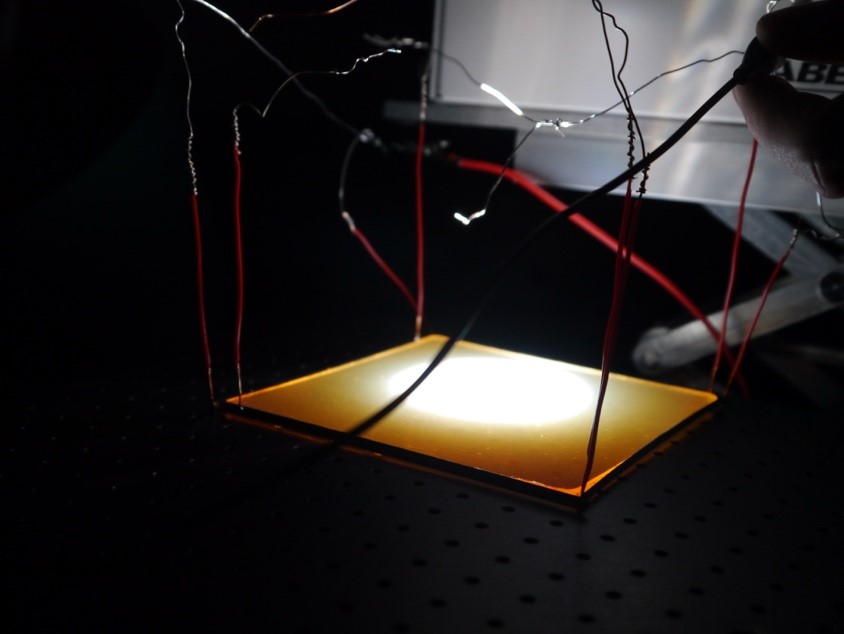Solar energy conversion technologies have a crucial role to play in our transition to an all-renewables society. However, single junction solar cells, such as those now widely found in the urban landscape, still fail to achieve their maximum solar to electrical energy conversion efficiency because they are unable to use all available wavelengths of the solar spectrum. We are faced with a Goldilocks conundrum: the infrared region of the spectrum is too low in energy to generate an electrical current, while the UV region is so high in energy that much of the absorbed sunlight is wasted as heat. But is there a way to convert the solar spectrum into wavelengths that are just right?
Spectral converters are photoluminescent materials that can be applied to the surfaces or edges of finished solar cells to capture the incident solar spectrum and to “shape” it into wavelengths that can be used more effectively by the device. However, while the photoluminescence processes used transform photons at the high (downshifting, quantum cutting) or low (upconversion) energy boundaries of the spectrum are well-understood, the spectral conversion materials required to execute them efficiently in the solid-state are still the subject of intense investigation. In this progress report, recent developments in the design and implementation of new spectral conversion materials and their integration with solar cells to generate luminescent solar devices are discussed. In particular, the transition from conventional luminophores and host materials to the emerging trend of tailor-made integrated spectral converters is examined, with a view to helping promising solution-phase systems to reach their true potential in solid-state devices.
Figure: Photograph of a large area yellow-emitting luminescent solar concentrator coupled to four silicon photovoltaic cells to create a luminescent solar device under irradiation with simulated sunlight.
B. McKenna and R. C. Evans, "Towards Efficient Spectral Converters through Materials Design for Luminescent Solar Devices", Adv. Mater., 29, 2017, 1606491.

